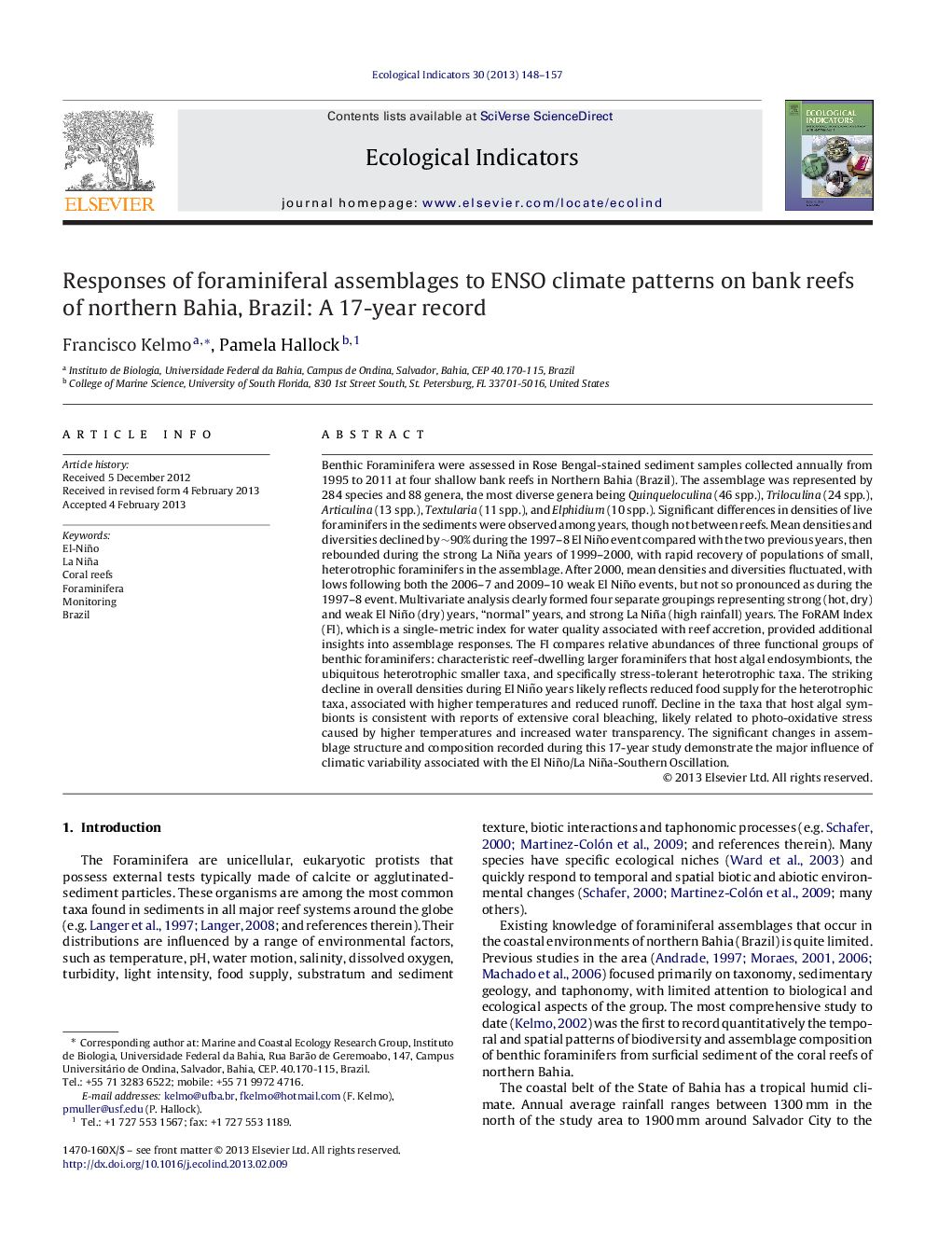| کد مقاله | کد نشریه | سال انتشار | مقاله انگلیسی | نسخه تمام متن |
|---|---|---|---|---|
| 4373433 | 1617170 | 2013 | 10 صفحه PDF | دانلود رایگان |

Benthic Foraminifera were assessed in Rose Bengal-stained sediment samples collected annually from 1995 to 2011 at four shallow bank reefs in Northern Bahia (Brazil). The assemblage was represented by 284 species and 88 genera, the most diverse genera being Quinqueloculina (46 spp.), Triloculina (24 spp.), Articulina (13 spp.), Textularia (11 spp.), and Elphidium (10 spp.). Significant differences in densities of live foraminifers in the sediments were observed among years, though not between reefs. Mean densities and diversities declined by ∼90% during the 1997–8 El Niño event compared with the two previous years, then rebounded during the strong La Niña years of 1999–2000, with rapid recovery of populations of small, heterotrophic foraminifers in the assemblage. After 2000, mean densities and diversities fluctuated, with lows following both the 2006–7 and 2009–10 weak El Niño events, but not so pronounced as during the 1997–8 event. Multivariate analysis clearly formed four separate groupings representing strong (hot, dry) and weak El Niño (dry) years, “normal” years, and strong La Niña (high rainfall) years. The FoRAM Index (FI), which is a single-metric index for water quality associated with reef accretion, provided additional insights into assemblage responses. The FI compares relative abundances of three functional groups of benthic foraminifers: characteristic reef-dwelling larger foraminifers that host algal endosymbionts, the ubiquitous heterotrophic smaller taxa, and specifically stress-tolerant heterotrophic taxa. The striking decline in overall densities during El Niño years likely reflects reduced food supply for the heterotrophic taxa, associated with higher temperatures and reduced runoff. Decline in the taxa that host algal symbionts is consistent with reports of extensive coral bleaching, likely related to photo-oxidative stress caused by higher temperatures and increased water transparency. The significant changes in assemblage structure and composition recorded during this 17-year study demonstrate the major influence of climatic variability associated with the El Niño/La Niña-Southern Oscillation.
► A 17-year record of foraminiferal assemblages is reported for reefs off northern Bahia.
► ENSO-related weather strongly influences assemblage densities and species richness.
► Foram densities and species richness declined sharply during the 1997–8 ENSO event.
► Rainfall and turbidity were major environmental controls on foram assemblages.
► FoRAM Index values tend to be lower if based on live rather than total assemblages.
Journal: Ecological Indicators - Volume 30, July 2013, Pages 148–157